|
|
I’d played dozens of step tournaments to get this far and this was my first shot at getting something out of the system: I’d made it to Step 4 of a Poker Stars WCOOP Satellite.
With steps, you’re never done until you either win a top prize or lose. However unlike most of the live event satellites, the WCOOP Steps offers a choice of routes, some of which are much more achievable.
Instead of being stuck on a path that takes 6 steps to win your way into a $5,200 package ($7.50, $27, $82, $215, $700 and $2100) you can branch out at Step 3 or 4 to play directly for a $330 or $530 tournament seat.
I’d decided to go for the $530 route, with the intention of unregistering and keeping the W$ value for future speculation – or possibly towards buying into smaller WSOP or EPT events – should I get there.
In a 9 handed Step 4 sit-and-go worth $215 to enter, 3 players win a $530 seat and 1 gets $210 cash. Everyone else leaves with nothing.
In fact, from WCOOP Step 3 onwards there’s no backtracking. You can’t fall back to Step 2, only repeat the same level, move forward or lose completely. This structure is designed to attract higher stakes players to buy in directly at the $82 and $215 levels. It seems to work, and it can make these games pretty tough.
Anyway enough suspense. My first crack at Step 4 was a terrific victory and will surely be an inspriation for other weak-tighties playing way out of their comfort zone.
I played like a rock, as did just about everyone else. For example, how often do you see AJ check behind on the river with a board of TT7AA and a flush possible? You really think the only hand that calls a bet there is pocket tens?
Then with just T1460 left in chips and facing a T300 big blind next hand, something beautiful happened. Two monster hands and a big stack who felt like taking a crack.
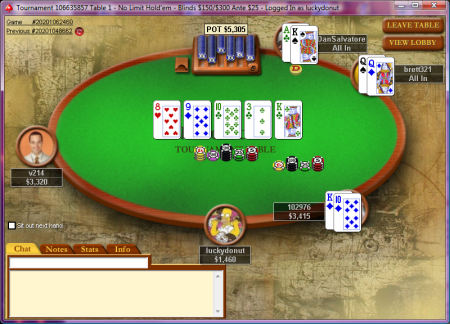
The double bust out threw me into the top 3 and a seat to Sunday’s $3m guaranteed event, apparently. The first time I’ve ever made it out of a Step series alive!
It took about 1.5 seconds before I’d unregistered and was counting my W$. 🙂
You need wait no longer. The long-anticipated results graph is here. This is how my live poker experience in Las Vegas went.

As you can see, I was some way off my target of 100 hours played. In fact, I logged 64.5 hours, in 32 sessions at 14 different poker rooms.
Almost all games were $1/$2 no-limit Hold’em (only Caesars Palace and Palms were $1/$3, for a total of 2.5 hours).
Each point on the graph marks the end of a session – I only ever recorded wins and losses when I cashed out of a game.
However, because of the way I approached game selection and bankroll management, there won’t be many big swings within a session that aren’t shown here.
I always bought in for $200 and topped up whenever I dropped below $150. Usually I’d just pull out another $100 bill if the table allowed it (some games have a $200 cap, some are $300) so I’d be playing anywhere between $150 and $250, except when I was winning.
If the game looked particularly soft and other players were already sitting deep, I’d bring another $100 into play as soon as I’d spotted where a big payoff might come from.
Usually, I’d hit and run after a win of $100 or more. Spit all you like, but I needed a reason to stick around after taking down a big pot. I especially didn’t like to be sitting with $400 when other players still covered me, and particularly if I thought those players knew what they were doing.
If a player was very drunk, or steaming after a big loss, or just plain awful I’d stick around. Contrary to popular belief, this isn’t always the case and when it wasn’t I was off to another game.
If I thought the table sucked, I’d always try to hang around for an hour for the experience, and to make sure I’d got it right before moving on. But if I wasn’t getting action from a table of rocks – or just because I hadn’t seen a hand for an hour and the whole table went "oooooh" the first time I raised – I’d get the hell out at the first opportunity.
This "cardroom crawl" approach is pretty inefficient in terms of hands per hour, but that was my plan and I stuck to it. In fact, until the last weekend, I hardly had to wait on a list at all.
At about 30hrs, I did indeed win over $400 in under an hour. Pocket deuces, baby, and after hours of pain it was finally my turn to be on the right end of top two pair against a small set.
The graph does not include the $200 lucky seat jackpot I won at Palms. I really didn’t know whether to put this in but decided against it. I still have no idea what happened, but I’m sure it had nothing to do with my cards. I may as well have won it in a swipe-and-win.
If I’d hit a high hand bonus, I would probably have counted those on the graph – especially if it was paid with chips that ended up in play. After all, the $1 jackpot drop taken out of of every pot is included in those numbers above (as well as dealer tips and cocktails) so when it pays off I guess I should count it too.
However, apart from a quite exciting flopped open-ended straight flush draw at Luxor (the highest hand each hour wins $100) I didn’t get anywhere close. I really wanted to spin the wheel at Excalibur one last time before the room closed, but it wasn’t to be.
So, the overall profit of $635 puts my win rate for the trip just ever so slightly under $10/hr. My "career" win rate over 160 hours is a little higher.
Make of all this whatever you like. It’s really not much of a sample size still. All these numbers tell me is that I spent half the trip losing and then went on a heater. Not as useful as I’d hoped it would be.
Since Poker Tracker 3 was finally released a couple of weeks ago I’ve been dying to try out it’s graphing features, hoping that it would mean I’d be able to stop using my clunky Excel spreadsheet to keep track of tournament results and let it do all the hard work for me instead.
Indeed it does look very promising, converting my old effort (which I used in this post) into this piece of exquisite chart art (click for full size):
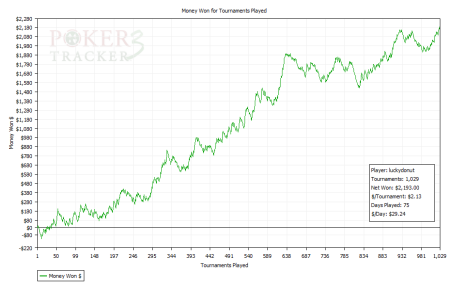
However, getting to this stage wasn’t particularly easy. The database conversion tool would not run (reporting a lost database connection after about ten minutes every time I tried) and even though I’d tried to keep all my hand histories and tournament summaries in anticipation of PT3, it turns out I didn’t have a complete set.
I had still been loading my results into PT2 as well as keeping them in the spreadsheet. It’s not that I don’t trust the older Poker Tracker, it’s just that it could only tell me how great I’ve been playing with numbers. For as much as I love the raw stats, if you can’t show it on a graph, it didn’t happen.
The data had tallied exactly for months, so nothing less than a perfect database migration would be good enough.
To get there I ended up exporting my hand histories from PT2 into text files and loading them into a fresh database on PT3. This actually isn’t such a bad way to do it if you want some control over the data you bring into the new version. You can put a filter on the hands that are exported, so for now I selected only Poker Stars and only the turbo SNGs I cared about. I left out the couple of hundred EPT Steps that I’d played earlier in the year that had been stinking up my results as well as about 200,000 datamined hand histories on iPoker that I didn’t need any more.
About 20 minutes later, it had almost worked.

1,029 tournaments is the magic number, and this added up, but why on earth did it think 11 of them were different? They should all be no limit!
I wasn’t going to put up with that, but not to worry. I put on my robe and database wizard hat and got down to business, uttering the secret magic words:
UPDATE tourney_holdem_summary
SET id_tourney_type = 200
WHERE id_tourney_type = 0
After that, all was right in the world.

So, what better time than now for a bit of results-oriented analysis. A thousand hands is getting into the realms of a significant sample size and the signs are still fairly good. A 13.3% ROI from turbo SNGs is fairly satisfying as far as I’m concerned. $2193 profit is also something I can take to the bank, even if it is a bit depressing when the graph reminds me that I’ve been going mad at these sit-and-gos for what equates to an actual a win rate of about $2 per tournament.
I play four at a time and each set usually takes about 45 minutes to complete. I could try playing more, but I already struggle a bit the times that I get short handed on all four tables, so giving myself more things to think about at a critical time is probably a bad idea. There’s a little extra value to be gained from player points, deposit bonuses and buying tournament dollars but even so (assuming this is sustainable) I won’t be giving up the day job for what would be – at best – about $12 per hour.
This is going to be a disruptive month with my trip to Las Vegas and Laughlin around the corner, but if I get chance for a few serious sessions I think it’s about time I took a shot at the next level up ($25+$2) and see how I get on. Good luck to me.
I thought it would be virtually impossible to reach a prize-worthy position in any of the new PokerStars Battle of the Planets sit-and-go leaderboards playing only single table tournaments, but obviously I just forgot how great I am.
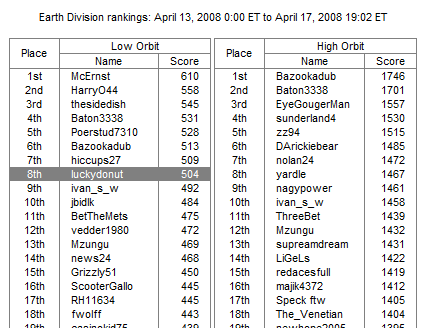
Seriously though, look at this unbelievable run of results I needed to even get up to 8th place: 7 x 1st, 5 x 2nd and 3 x 3rd.
That’s 15 in-the-money finishes out of 20 tournaments. Call it a game of skill if you like, but that kind of form takes more than a little luck.
You can see from my profit graph that I’ve never had a streak quite like it before. Isn’t it pretty?
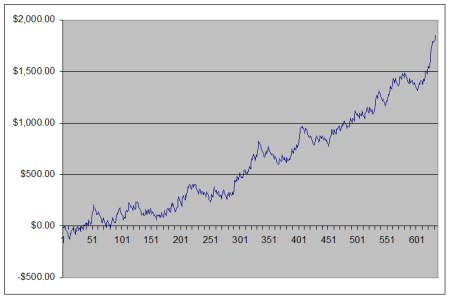
I know there’s bound to be an almighty downswing waiting around the corner, but I can brag while it’s going well can’t I?
Each Battle of the Planets league ends on Saturday night and resets on Sunday morning so there’s still two full days of play left and my position certainly isn’t safe. 504 points was enough for both 7th and 8th place last week, but right now 8th place is the best I can possibly get with that score.
If I manage to stay in to the top ten, I’ll win some cash (it’s $80 for 8th) and a ticket to the monthly $50,000 freeroll. It’s a triple shootout format (729 players max) but with eight different leagues, two "orbits" in each and ten players winning a ticket each week, in a four-week month that’s 640 tickets given away for the tournament. Some players will win two tickets and some winners won’t turn up so the value of the freeroll ticket must be at least $100.
If I don’t hang on to the giddy heights of top ten stardom, there’s still some prize money for finishing in the top 30. I should have a pretty good shot at that at least.
I realised – completely by accident when I happened to load the right number of tournament summaries into Poker Tracker at the right time – that I’d recently reached $10,000 spent on these turbo SNG entries. I only mention it because that same money (if I actually had it all in the same place at the same time) would get me one World Series of Poker Main Event entry.
Doing things this way involves a little less variance, though. Sure, I’m not going to win ten million but I’m also not going to lose ten grand all to one suckout. It’d take 625 different suckouts.
Here’s the magic stats:

I still can’t believe that this is close to being a reliable sample size. My last eight results alone (1st, 1st, 2nd, 4th, 3rd, 3rd, 3rd, 1st) pushed the overall ROI up from the 16.6% shown here to 18.4%. Maybe when I’ve played a few thousand I’ll have a little more confidence in the numbers.
EDIT: 5 hours to go and I’m 10th. Gonna be close.
EDIT: Sodding eleventh. A big fuck you to "$tr8t Hu$tla" who not only has a shit screen name, he also waited until the very last minute to score 521 points. I hope I get the chance to bust you soon!
A week ago, Poker Stars launched their "Battle of the Planets" leaderboard week for sit-and-go tournaments. You get points whenever you finish in the money, then your best blocks of 20 results (the "low orbit") or 100 results (the "high orbit") determine your league position.
As I happened to be playing quite a few SNGs at the moment anyway, it’s looked to be a nice free shot at some extra money.
My first set of results is now in: not even close.
The likely difficulty for single table sit-and-go players like myself is that although the leagues are divided by entry fee you also have to compete against players in the 18-man and 27-man tournaments, and they receive nearly twice as many points for a first place finish as you do for winning a 9-man SNG.
Of course, whatever you play it would take a pretty insane run of luck to win one of these things, but five or six first places in 3-table tournaments from a block of 20 seems much more achievable than ten or eleven single table victories in the same period – that would be first place at least every other game – to get the same number of points.
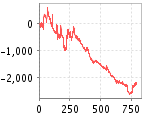 ryan422323, this week’s winner in the "Earth – low orbit" (blocks of 20 for $10-$19 tournaments – the level I’m playing at), looks like a losing player who suddenly got lucky at the right time. It happens. ryan422323, this week’s winner in the "Earth – low orbit" (blocks of 20 for $10-$19 tournaments – the level I’m playing at), looks like a losing player who suddenly got lucky at the right time. It happens.
As expected, Sharkscope reveals his most recent results are from a mixture of 18-, 27- and 45-man sit and go tournaments (although the 45-man results don’t count for this leaderboard – that’s apparently enough players to be considered a real tournament).
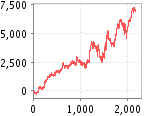 Second place finisher jellycz has had a rather better tournament career, with Sharkscope showing a long term return on investment of 19% across his PokerStars tournaments. Second place finisher jellycz has had a rather better tournament career, with Sharkscope showing a long term return on investment of 19% across his PokerStars tournaments.
Still, he would have had to do much better than that over the block of 20 that counted towards his leaderboard position.
In fact we can work out just what kind of return is needed to win the Battle of the Planets from the final points totals.
Regardless of the buy-in, the points you receive are based on the prize distribution rather than the actual dollar amounts won. The number of points is the same as the prize money would be for a $10 buy-in. For example, first place in a 9-man SNG gets 45 points – although you actually win $67.50 for a $15+1 stake or $112.50 for a $25+2, the prize is always 4.5x your stake. First place in a 27-man SNG wins 8x the stake, so you receive 80 points.
So, with 637 points the winner would have received $637 in real money if he had played 20 sit-and-go tournaments that cost $10 each. That’s an amazing 219% ROI! Second place with 552 points is still-insane 176% ROI.
My hottest block landed me 369 points, with 11 in-the-money finishes out of 20 (5 x 1st, 4 x 2nd, 2 x 3rd). That’s a fiendishly good 85% ROI, and I finished 256th.
Although I’ve been playing single table sit-and-go tournaments for as long as I’ve been playing online poker, I’ve never really played then in enough volume or taken them seriously enough to have a realistic idea of how well I could do. That is, until this month.
After throwing away far too much money chasing a dream with EPT Steps on PokerStars – a series of single table tournaments that play with turbo blinds (in the lower levels, at least, the first time I got to Step 4 I was completely unprepared for the "normal" blind structure!) – I’d started to feel I was getting on OK with that format but never quite got lucky enough to parlay $5.50 into a twenty grand seat package.
There’s no prizes in between worth speaking of, just odd dollars here and there, and although a poker trip to Warsaw would be nice – as well as a little bit scary – I wasn’t going to go mad over it. So I thought I’d play a few more for, like, actual money.
Turbos SNGs never last more than an hour, and often they’re over in 30 minutes – even if you make the money. I soon realised that this speedy format should give me a chance to play enough tournaments to see a pattern emerge without having to stick with it for months and months – particularly once I became comfortable playing four at a time!
Here, three weeks later and thanks to a spreadsheet I had to knock up in Excel as I couldn’t work out how to get Poker Grapher to read my tournament results, is that pattern.
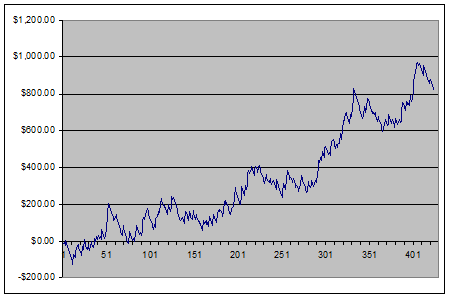
I like the pictorial view much more than the dry output from Poker Tracker, which simply tells you how great you are through the medium of green numbers.

So, yes, 425 is not a huge sample size but it’s definitely a start and those early signs are looking good. The Two Plus Two forum FAQ speculates that a "very good player" could achieve a return on investment of 14% at this level, so I think I have every reason to be pleased with this performance.
So what’s my next step? Time for an enforced break now while I nip off to Vegas for a week or so (T-2!) but if I can carry on with these winning ways I’m going to need a plan to try to maximise the money I can make from these tournaments.
The results above equate to a win rate of about $8/hr in real terms (playing four tables and waiting for each set of four to complete before starting again), which is not to be sniffed at but it doesn’t compare to most of the casino bonuses I’ve been playing lately, and even though poker is much more interesting than blackjack this probably isn’t enough to keep me focused on playing intently for any longer than any of my previous poker fads have lasted.
So should I consider moving up limits yet? Or perhaps try to play more tables at once at the same buy-in? Or maybe I should stick with what seems to be working but look to improve, nay perfect, my game using tooks like Sit-and-Go Power Tools or SpadeICM?
I’ll have to have a good think about that over an all-you-can-eat buffet next week… 😉
So you wait weeks for Sporting Index to do another promotion, and then two come along at once.
It’s back to back weekends of bet refunds, this time with losses up to £30 given back so you can try out their latest "why wouldn’t it be random when nobody knows how it works anyway?" novelty game – Top, Middle or (you guessed it) Bottom.

Would the real Michael Barrymore please stand up.
And now, hopefully, I’m not the only one with that theme music stuck in my head.
Dooo do-doo do-doo do-doo do-do-do dooo. Do do de do.
"The principal of this game", the instructions began – pushing my pedantry meter into overdrive after just two words: it’s principle goddammit. What’s that, you used the spell checker? Plstryharderthx. Shall we continue? … "is very easy".
Actually it’s not very easy. It took me at least a dozen goes using play money to even start to understand what was going on, so I’ll try my best to explain it but can’t guarantee it’ll be great.
Picking top, middle or bottom reveals a symbol. You advance to the next column if you pick either a single arrow or you move across two columns with a double arrow. To get the maximum score you have to pick arrows all the way to the other side of the board and your current score is determined by the number shown at the top of that column.
If you reveal a question mark you then have to pick one of four boxes. Three boxes contain your current score value and selecting one of these awards you that score and the game is over. The fourth box contains a green arrow and you move to the next column and continue.
What is a Hot Spot? Not a good spot, of course. But in this game it’s a red cross. Just different enough to avoid a lawsuit I expect. If you reveal a Hot Cross (not a good cross) the game ends with zero points no matter how far you got across the board.
So far that actually sounds quite simple, but it’s complicated no end by the fact that it’s a spread betting game, and once you move across the board you are offered the opportunity to quit the game and take the new price offered, but that price is not going to be the same as your score because you haven’t actually finished the game until you get all the way across or end it with a red cross or question mark.
Very easy, yes?
Assuming that you are at least 1-in-3 to hit some kind of arrow and proceed is one thing (all the games I played did reveal at least one arrow in every column) but knowing what advancing one step is worth versus how much you’re risking to get there is a totally different matter.
To be honest, I just didn’t care enough about this game to work it out. If it wasn’t for the £30 free bet I’d have been long gone. I guess there must be demand for this kind of thing among spread betting degenerates for whom there just isn’t enough sport to bet on, but I don’t see the appeal. First they have to get me to understand how the game works (in this case they didn’t do a great job) and then they have to get me to trust it, and if it’s not based on something that’s random in real life that’s usually tough. TV game shows are random? I think not, and nor does the chap from the video above if you check the comments on YouTube.
Anyway, after a few play money games with the minimum stake, I noticed that if I hit a double arrow the first time or two single arrows I could then take the offer for a £1.50 profit, whereas a cross was a £2.00 loss. To avoid thinking any longer, this was good enough to start playing a few minimum bets to qualify for the refund – I needed ten bets at this level and finished up £7 down on the deal.
So with a further £23 that could be refunded it was time for one larger bet to try to find a profit. This worked out at betting £1.15 per point, a maximum loss of £23 and a maximum win of £1160. Of course, I wasn’t going anywhere near far enough across the board to win a grand and decided that a tenner profit or more would do.
I went "middle" and got a green arrow. The game offered me £5.75 profit – not enough to get me back into profit overall so I would carry on, right after I took a screen grab.
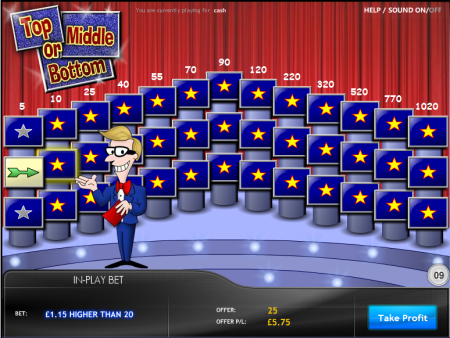
See that timer in the bottom right corner? 9 seconds it says. Well it took me a bit longer than that to paste and save the screenshot and while I was finishing up I heard a ding and some cheering from the other window.
With my back turned, apparently I had gone "middle" again. Whether this is a random choice or just a repeat of my last selection I have no idea. Can’t say I was pleased about it making the decision for me. Surely if it looks like I can’t be bothered to play any more, it should hit the "take profit" button and cash me out rather than gambling it up on my behalf? And really, 15 seconds in total to act? Why? What damage, exactly, am I doing to your bottom line by not gambling any faster than that?
Fortunately it was a winner, or I’d really be ranting about it. The new offer: £17.25, which just pushed me into enough profit to make my target. A total win of £10.25.
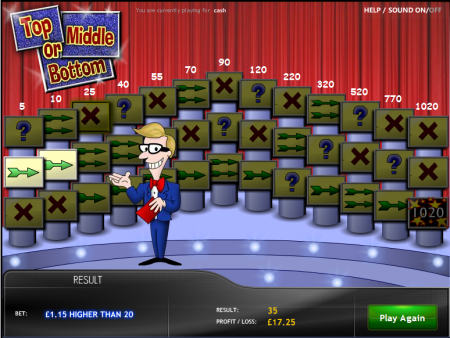
Good game good game? No.
If you listen carefully, you can hear the clinking of a single champagne glass. I’m finally done playing on Paddy Power Poker, and that’s cause for a mini-celebration.
I actually quite like the iPoker software and there’s usually good game selection at the levels I play, but the problems is that I never really knew where I was with those games. Mixing and matching so many different limits probably didn’t help though.

I was up and I was down and I was swinging all over the place. Every limit I played I was in the green for a while, and then it swung back in to the red and back up again. Some of them stayed there. While 23,662 hands is be a reasonable number to start seeing getting an idea of how I played, it’s not much use with only a few thousand hands on each of the fixed limit games.
However, looking at the percentage of hands I played at $3/$6 compared to the other limits, I should probably re-evaluate whether I’m actually comfortable playing for those stakes. The only thing that kept me coming back was my data on the players at that level suggested they could often be much looser than the usual nits at $2/$4, and so I thought I was finding good spots. I just never really made them pay.
The good news though – despite being a loser on paper, I’m still leaving the site with about a grand more than I came with, thanks to signup bonuses, monthly cash rewards, player point redemptions and a friendly affiliate referral. But boy was it hard work, and barely worth it.
But now that I’ve used up all of the $600 sign up bonus and been left with a mountain to climb to get back into VIP status (their member level formula looks at the last 3 months activity, so I’d now have to over-compensate for a quiet January) and I’m moving on.
At least I got a nice little hot streak to end it all with. These all happened within five minutes of each other (check out the timestamps on the screenshots!) and were part of a very welcome $200 upswing.
1. My biggest pot ever at $1/$2
 Well, I can’t be sure it was actually the biggest I ever had but it felt like it, and the action was amazing. $65 is a 33 big bets pot, and I took it down with pocket kings which made a full house on a board of 556KQ. Well, I can’t be sure it was actually the biggest I ever had but it felt like it, and the action was amazing. $65 is a 33 big bets pot, and I took it down with pocket kings which made a full house on a board of 556KQ.
It was capped on every street except the flop, with the two other guys involved seeing something I obviously missed in their KQ and 99 hands.
Click the thumbnail to see the full hand history.
2. Table selection paying off.
 I’d seen a particularly juicy-looking $3/$6 table but it took me an hour to get the right seat. I’m quite fussy about where I sit now. Playing fixed limit in particular, there’s so many good players that you have to try to sit as close to the immediate left of any mark you find to play the maximum number of hands against them in position. I’d seen a particularly juicy-looking $3/$6 table but it took me an hour to get the right seat. I’m quite fussy about where I sit now. Playing fixed limit in particular, there’s so many good players that you have to try to sit as close to the immediate left of any mark you find to play the maximum number of hands against them in position.
I’d had my eye on seats 6 and 9 who were both seeing over 40% of flops. By the time I got into position in seat 2, two other seats had also been filled by fishy players. Click the table thumbnail to see what a good game should look like. On iPoker, this almost never happens, and especially at this level.
 The first hand I got involved with was perfect. Mr Loose had limped in and I raised him with AJs. Everyone else got out of the way for a magic all-heart flop. He’d limped in out of position with two small hearts, I had two large ones and he paid me off very nicely thankyou. The first hand I got involved with was perfect. Mr Loose had limped in and I raised him with AJs. Everyone else got out of the way for a magic all-heart flop. He’d limped in out of position with two small hearts, I had two large ones and he paid me off very nicely thankyou.
3. Royal flush, baby
It’s only seven months since my last one, but this always deserves a picture.
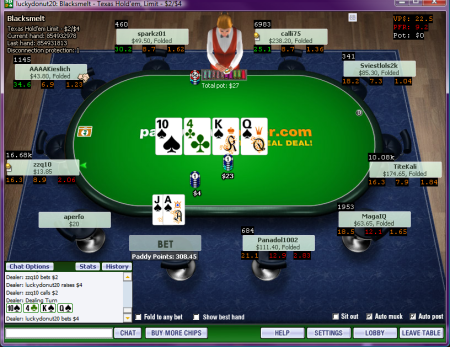
 I got called to the river by pocket kings, which had flopped a set but got scared by the possibly flush and straight options. I got called to the river by pocket kings, which had flopped a set but got scared by the possibly flush and straight options.
Shame the board didn’t pair on the river, really. 🙂
I am delighted to report that my first trip to Dublin – which of course involved a little poker – was an astounding success. I’m about even.
I played at Cool Hand Luke’s, which is in the process of being converted to Gutshot’s Dublin venue. The basement is already decked out with orange and black G-swirls, and has a fine internet cafe and deli open until 4am. The casino and card room upstairs, however, are quite different – and different to anywhere I’ve ever played before.
It’s a very homely place, in fact it all just feels like a big house, like you’re playing in someone’s living room. Very laid back, very friendly and very loose poker. It’s just a shame I couldn’t find a hand to take advantage!
I went deep in the EUR 20 rebuy tournament, making the final table and just missing the money by 5 places. This is an even more impressive achievement if I reveal that a massive six players started the game, although numbers had swolen to 18 at one point.
This hand presented an interesting ruling: at 25/50 and on my big blind (the cheek of it all) the player to my left raised to 150, his neighbour re-popped it to 500 and the next player moved all in for 1350. A surprise fold next, followed by another re-push for about 2000.
The next player to act realised he had only been dealt one card and asked the dealer what happens now. The floor came over and explained that theres’ no way it’s a do-over with all that action and he mucked his card without even looking at it.
Back to the original raiser who obviously didn’t like his spot and called a different supervisor over for another ruling on the same thing. Just in case, I suppose. Of course, he said the same thing – the action all stands. "But you can play with one card if you want", he added.
Would he want to, facing three raises? I’m actually not sure. It’s feasible if he had a good card like a jack or queen.
However it was too late and Original Raiser realised that he could negate his positional disadvantage by getting all the chips in pre-flop and called, and four hands got flipped over for a marathon. One of them actually had pocket kings, the rest all ace-rag and the worst one – A4, but it was sooted – spiked two fours to take it down.
After my elimination, the only game running was Omaha. Short handed too – just five others when I joined the game – and as I’ve never played Omaha live before, this was going to be interesting. I bought in for the minimum, sat tight, waited for the nuts and then showed it down for a 3-way chop. Fantastic. We all had the straight on the turn, but I was the only one with a flush redraw – does that qualify as a bad beat story in Omaha?
An American exchange student turned up wanting to play Hold’em and so the players agreed to change our game to round-of-each so he could join in. The action was fast and furious in both games and I was glad I’d only bought in for EUR 50. I’m actually a little more fond of the Euro now I’ve heard the Irish call it a "quid". Take it a step further, call it a "pound" and tweak the exchange rate a little and I’m all for it.
After one player called off EUR 230 on the river with a set vs the nut straight in Omaha, he created an awesome tilt pot in Hold’em a few hands later. Betting and raising in the dark for most of the hand against a player who flopped two pair with king-ten in the small blind, he was finally forced to look at his cards after being check-raised on the turn. The board showed KT3A and, somehow the blind raiser had been sitting on ace-king all along for a EUR 800 pot after all the money made it to the middle.
It lasted about three rounds before we were back to just Omaha. The token American had busted and went home, although he did last long enough to try to explain how the presidential elections work. He must had made a good job of it too, as I actually feel like I have a clue now. In the last hand of Hold’em I folded 35o face-up to a button raise on my big blind (realising I’d hardly played a thing and wanting to show why) only to be advised "that’s not a bad hand in a two-handed pot". I’m not convinced – there’s only two hands it dominates, and one of them is The Powerhouse – but unfortunately it was too late to adjust my style anyway.
I carried on leaking at Omaha until my host for the trip (apparently I was there for work) joined the game, at which point I suddenly doubled up through him and then stacked him! The most impressively bit was when my pair of kings and two spanners got there on the river on a QQ7AK board. Hey, don’t blame me, I never pretended to know anything about this game!
This is exactly what’s supposed to happen when you limp out of position and then call raises with medium pocket pairs. Although of course it hardly ever does, so it was particularly sweet to catch a miracle – and get paid – twice in a row.
Button ($37.40)
SB ($21.12)
BB ($8.50)
UTG Hero ($50)
UTG+1 ($22.05)
MP ($20.25)
MP ($17.50)
CO-1 ($48.75)
CO ($50.45)
Preflop: Hero is UTG with 8 8 8
Hero calls 0.50, UTG+1 raises to 2, 1 fold, MP calls 2, 5 folds, Hero calls 1.50.
Flop (6.75) Q A A 8 8
Hero checks, UTG+1 bets 5.50, 1 fold, Hero raises to 48, UTG+1 moves all-in for 14.55.
Turn (74.80) T
River (74.80) 4
Hero shows 8 8 8
UTG+1 shows A Q Q
Hero wins 74.80 with Three of a kind, Eights
Button ($20.87)
SB ($8)
BB ($50)
UTG Hero ($72.50)
UTG+1 ($20.25)
MP ($15.50)
MP ($48.75)
CO-1 ($50.45)
CO ($37.40)
Preflop: Hero is UTG with 7 7 7
Hero calls 0.50, 4 folds, CO raises to 2, 3 folds, Hero calls 1.50.
Flop (4.75) 9 3 3 7 7
Hero checks, CO bets 4, Hero raises to 70.50, CO moves all-in for 31.40.
Turn (110.65) 8
River (110.65) J
Hero shows 7 7 7
CO shows A A A
Hero wins 110.65 with Three of a kind, Sevens
I promise these were back-to-back hands on the same table. It says I was in the same position for both, which makes that sound a little fishy, but it’s totally true! A new player sat down to my right to take the big blind for the second hand, so I really was first to act on two consecutive deals.
Seeing as I’d already unticked "auto-post blinds" and was just getting ready to finish for the night, I’m quite glad he came along to give me one more hand…
|
|







 ryan422323
ryan422323 Second place finisher
Second place finisher 









 8
8


Comments